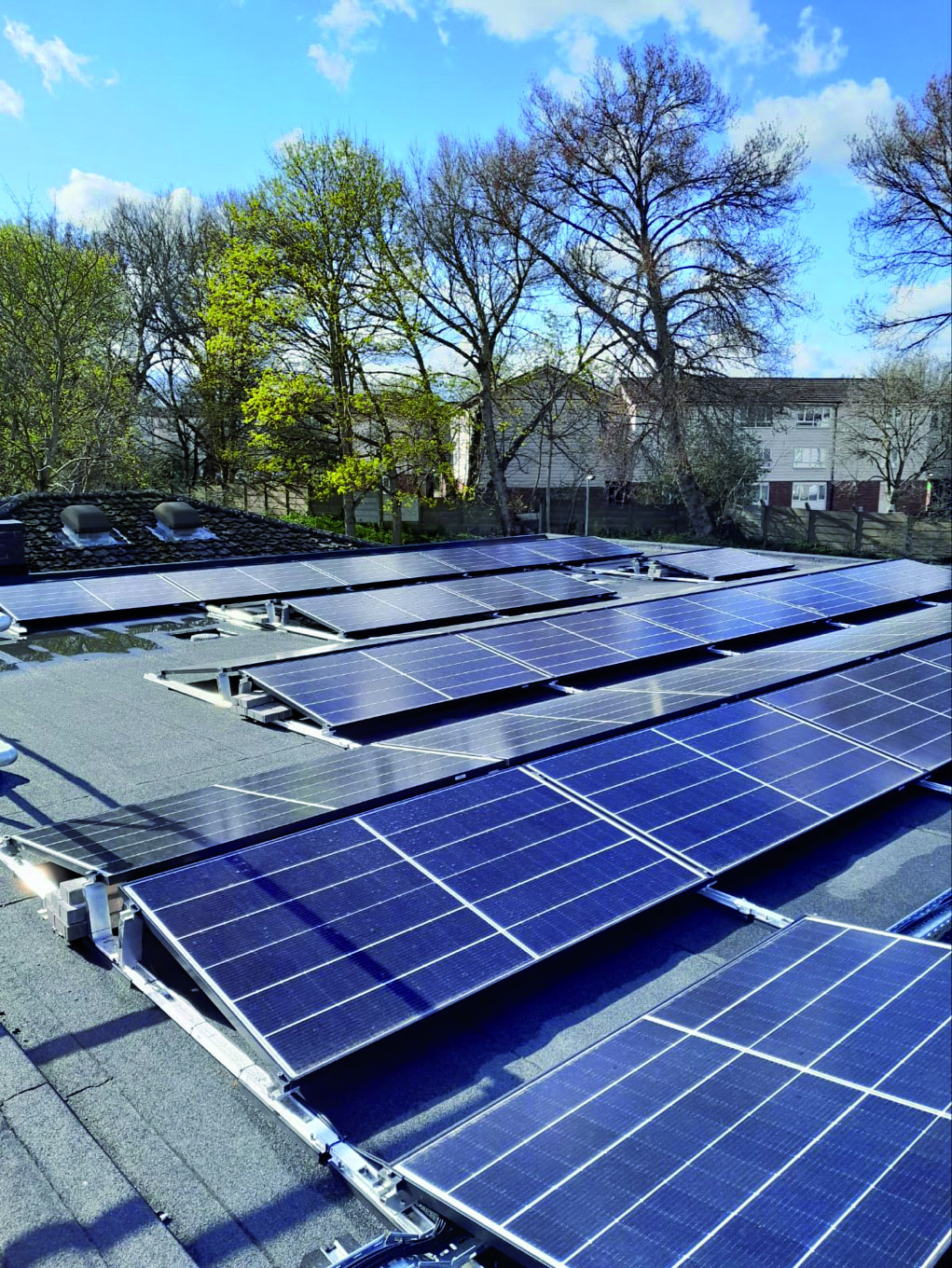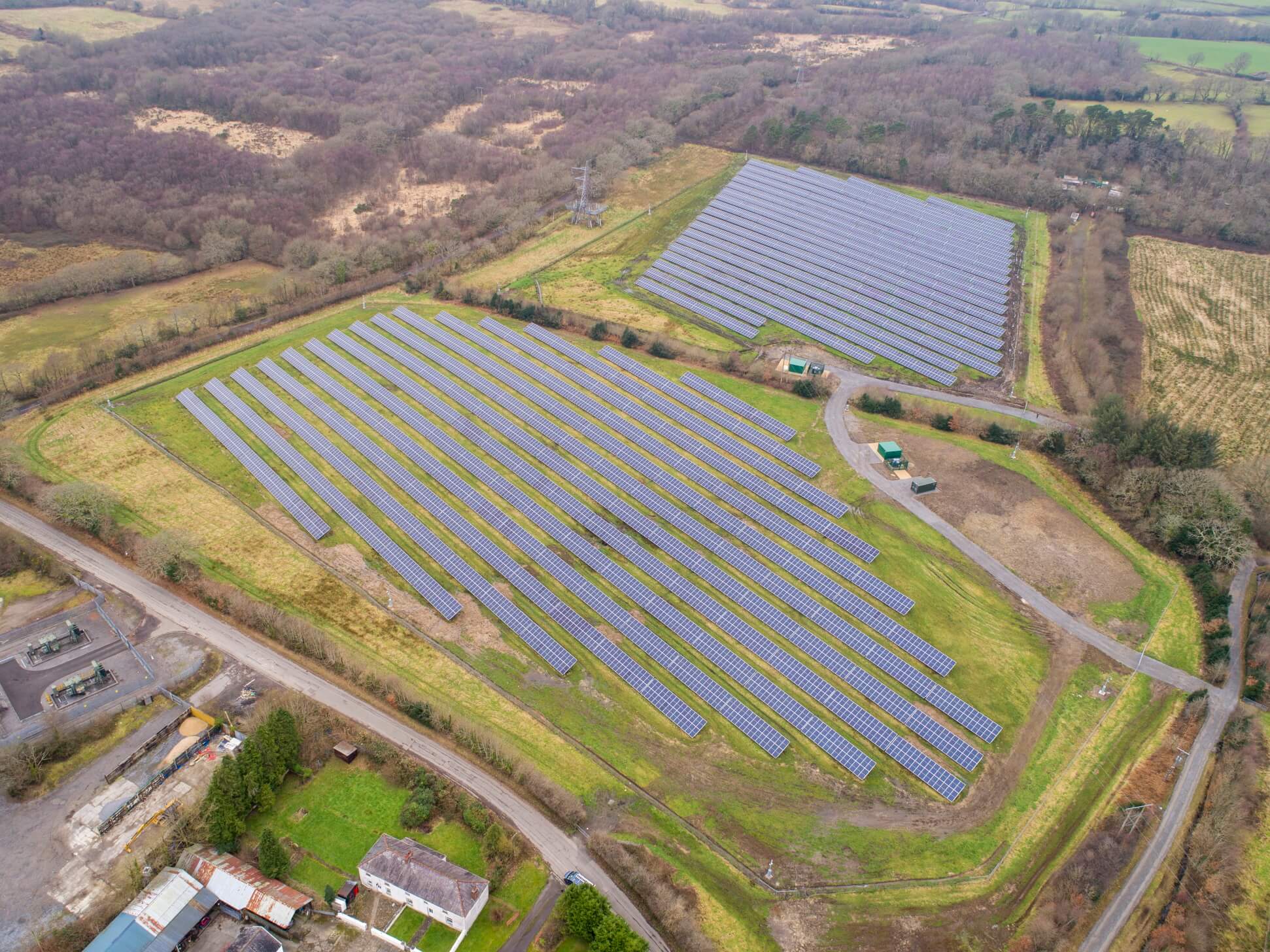
In this article we look at how solar panels are helping to power the healthcare estate and reduce carbon emissions
For healthcare estates and facilities managers, ensuring that the buildings from which services are delivered are fully operational, 24 hours a day, 365 days a year, is key.
And an effective power supply is essential to this – ensuring a comfortable environment for all building users, enabling life-saving services to continue round the clock, and, increasingly, helping to reduce the NHS’s carbon footprint in line with the Government’s net zero pledge.
For hospitals, one particularly-attractive power-generating solution is photovoltaics – better known as solar panels.
These consist of hundreds of cells made from layers of semi-conducting material, most commonly silicon.
When light shines on this material, a flow of electricity is created.
Phil Mottershead, project development director at Vital Energi, explains: “Solar has established itself as one of the most-popular ways for the healthcare sector to achieve an immediate impact on lowering energy and carbon reduction.
A strong business case
“Given the recent, well-documented energy price hikes, a particularly-attractive aspect for the health sector is the financial one.
“While solar has had a strong business case for years, it is now particularly compelling, with some trust-owned solar farms saving hundreds of thousands of pounds a year in electricity costs and, in some cases, generating income by exporting to the grid.”
Andrew Donald, senior business development manager at Powerstar, adds: “Solar power is a particularly-relevant form of on-site renewable power generation for hospitals given the usually-large scale of the estate – meaning there is an opportunity for a significant array, providing sufficient clean energy production to justify infrastructure investment.
“Reducing the demand for fossil fuels and replacing this with greener energy can help trusts make major strides towards achieving NHS carbon emission goals – both the legally-binding targets of net zero by 2045 and, in particular, Scope 2 emissions targets – the most significant of which is energy usage.”
Scalable solutions
A benefit of solar over other power-generating technologies is that it is scalable – once an array is built it is relatively straightforward to extend it in future phases to increase capacity as needed – a key consideration for hospitals, where service demand is constantly changing.
But there are also challenges to this approach.
Mottershead explains: “Planning can be a challenge, but a good design on well-chosen land should make the process relatively straightforward.
“Space can also be a hurdle.
“If healthcare organisations are looking for a large solar PV installation, they will need to identify and secure a suitable parcel of land.
“If they are pursuing a rooftop solution, then work needs to be done to prove the roof has the structural integrity necessary to house solar panels and, if not, works need to be undertaken to make it suitable.”
Additionally, some projects can struggle to get permission for a new grid connection as the capacity is not currently available from the network, and the wait for additional capacity to be made available can be lengthy.
And, due to the way the panels work – only generating electricity during daylight hours – solar on its own cannot be considered a ‘magic bullet’ as grid electricity supply will be required to meet the balance of the site’s electrical demand and also to provide for resilience in the event the solar PV is unavailable.

Careful planning
Mottershead said: “Our advice is to engage with a trusted and experienced partner with a strong track record of working in the healthcare sector, as they will be familiar with all aspects in the delivery of a solar installation in a live healthcare environment.
“A good partner will ensure the solar solution is tailored to suit the demand of the buildings it is connected to, not just filling the available space you have with panels.
“This will involve careful modelling of current and future energy use so the solution is optimally sized and as efficient as possible.
“This is a crucial step as solar can be a valuable part of a hospital’s decarbonisation plan and the correct modelling and design will lead to stronger carbon and financial savings.”
Over recent years, while the technology remains largely unchanged, the availability of bifacial solar panels, which can also convert light reflected off the ground, means that, for the same initial cost, an array can deliver up to 4% more yield, which can add up to hundreds of thousands of kilowatt hours over the course of a year.
Panels now also come in larger sizes.
“A few years ago, we may have specified 400kW panels, but now there are 550kW panels, which can be ideal for certain projects as they can reduce installation costs,” said Mottershead.
Monopolising on the opportunities
“It is also possible to buy larger inverters and while there is a small increase in cost, you can specify 50% less, which delivers capital cost savings for the client.
“Additionally, fewer inverters means less cabling which, again, saves money.”
But one of the greatest way to monopolise on the opportunities solar power brings to the healthcare estate is through energy storage solutions.
Perhaps the biggest advancement is the technologies solar PV can be blended with.
Mottershead said: “By combining solar with technologies, such as heat pumps, battery storage, or LED lighting upgrades, we are able to amplify the carbon and financial savings, which is a great result for the client and something they should strongly consider.”
Donald adds: “Solar energy is not necessarily generated to seamlessly match the electricity profile of the hospital site, which can mean that energy generated is just wasted.
“Battery storage is, therefore, crucial for trusts looking to maximise the benefits of investment in solar power – for the greatest flexibility and control of energy budgets and energy usage.
Storing energy
“Battery Energy Storage Solutions (BESS) allow energy generated on-site to be stored when the conditions are right, and then used when needed.
“This can help trusts make the most of their investment in solar arrays, by using renewable power at peak times, decreasing the need to purchase energy from the Grid when prices are high.
Similarly, if power is purchased from the Grid at off-peak times and then stored for use during the day, these cost savings can help to pay for the original investment in solar.”
And, where solar power solutions are part of an overall carbon emission reduction plan, such as the transition to an Electric Vehicle (EV) fleet, BESS provides vital storage to enable the fast charging that could, otherwise, be either prohibitively expensive or not even feasible, should the trust’s Direct Network Operator (DNO) decide that such an increased energy demand would put too much pressure on the network.
Donald said: “On their own, solar arrays are not particularly efficient for onsite power generation. But, combining them with BESS technology provides the back-up emergency power and the flexibility that hospitals need to really reap the benefits of onsite renewables.
“And combining these technologies with a smart microgrid offers the optimum solution for a complex site and organisation such as a hospital estate.”
Futureproofing the estate
Multiple power flows can be controlled with AI-driven, automatic asset prioritisation, ensuring the security of emergency power demands, while optimising general energy usage.
Using load predictions and historical weather forecasting data, this AI analysis can make real-time, automatic decisions to help manage energy and highlight potential savings.
Examples of where solar is already having an impact on the healthcare estate include at Swansea Bay University Health Board, where Vital Energi has installed a 4MW solar farm on land three miles away from Morriston Hospital.
The project has just celebrated its one-year anniversary and has overperformed by 5%, saving 882 tonnes of carbon and protecting the hospital from rising energy prices.
At the other end of the spectrum, the company recently installed rooftop solar panels at a number of sites including Northwick Park Hospital, The Christie Hospital, and Gloucestershire Royal Hospital, ranging between 287kW-643kW.
And the firm has also completed a massive installation of more than 15,000 solar panels at New Cross Hospital in Wolverhampton and a solar PV array at Yorkshire’s Castle Hill Hospital, which will provide all the necessary power for the estate.
It is now working to build a solar farm on a former landfill site near Torbay Hospital in Devon, evidence of the increasing interest in solar as a way of generating energy and reducing emissions.
Financial support
There are currently a number of funding routes for NHS trusts looking to upgrade their energy infrastructure and decarbonise their estates, such as the Government’s Public Sector Decarbonisation Scheme (PSDS), the Carbon and Energy Framework (CEF), the Non- Domestic Energy Efficiency Framework (NDEE), and RE:FIT.
Donald said: “While the case for investment in solar power and BESS technology is compelling for the NHS, estate managers will obviously want to futureproof their estate as far as is possible and minimise the initial financial outlay.
“To minimise initial financial outlay, many trusts have taken advantage of PSDS funding to support energy management strategies, and this scheme looks set to continue to support decarbonisation with future tranches of investment.”
And suppliers are doing their bit to make products more attractive and more suited to hospital estates.
For example, Powerstar’s BESS is manufactured in a shipping container and can be transported to a site in one unit, with secure and restricted access, minimal disruption, and with no need to take up valuable floor space with the hospital buildings.